Electrifying Your Portfolio: A Comprehensive Guide to Electric Vehicle ETFs
Are you considering how to invest in the rapidly accelerating shift towards electric vehicles (EVs) but feel overwhelmed by the sheer number of companies involved? The electric vehicle revolution isn’t just about car manufacturers; it’s a vast, interconnected ecosystem spanning battery technology, charging infrastructure, advanced semiconductors, and critical raw materials. Identifying individual winners in this dynamic market can be challenging, even for seasoned investors. This article will explore how Electric Vehicle Exchange-Traded Funds (ETFs) offer a diversified and strategic approach to capitalize on this immense growth potential, outlining the key investment areas, various ETF options, and important considerations for your portfolio.
Here are some fundamental aspects driving the EV investment landscape:
- The global push for decarbonization and net-zero emissions is a primary driver.
- Technological advancements in battery efficiency and charging infrastructure are accelerating adoption.
- Government regulations and incentives play a crucial role in shaping market dynamics.
We’ll delve into the powerful market drivers propelling the EV industry, explore the crucial components of the broader EV supply chain, compare leading EV-focused ETFs, and discuss the inherent risks and strategic considerations for investors looking to navigate this exciting future of mobility.
The Electrifying Rise of Mobility: Market Drivers and Opportunities
The global transition to electric vehicles represents one of the most significant economic transformations of our time, often referred to as an “EV megatrend.” This shift is primarily driven by an urgent global push towards decarbonization and ambitious net-zero emissions targets. Governments worldwide are implementing stringent regulations and incentives to accelerate the adoption of zero-emission vehicles, moving away from traditional gasoline-powered automobiles. For instance, California has mandated that all new cars sold in the state must be zero-emission by 2035, a policy that significantly influences the broader U.S. market. Similarly, the European Union has set targets for a 55% reduction in CO2 emissions by 2030 and a 100% reduction by 2035 for new cars.
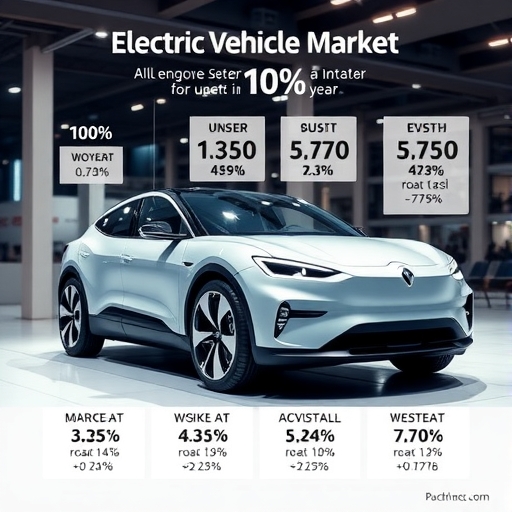
This regulatory environment, coupled with growing consumer awareness and technological advancements, paints a clear picture of future growth. The International Energy Agency (IEA) forecasts that global EV sales could reach an astounding 60 million by 2035, representing approximately 55% of all light-duty vehicles. This projection underscores the massive long-term growth potential for the sector. As investors, it’s crucial to understand that the EV market extends far beyond just vehicle manufacturers like Tesla or BYD. It encompasses a broad ecosystem of innovation and production, including:
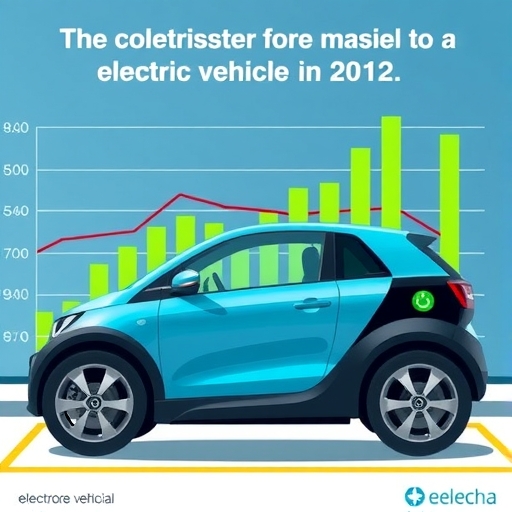
- Electric Vehicle Manufacturers: Both pure-play EV companies and traditional automakers transitioning to electric.
- Battery Supply Chain: Lithium miners, refiners, and battery cell producers.
- Semiconductor Suppliers: Critical technology for EV functionality and autonomous driving.
- Component and Part Manufacturers: A wide array of suppliers building specialized EV components.
- Software Providers: Developing the operating systems and features for modern EVs.
- Charging Infrastructure: Companies building and expanding the crucial network of charging stations and energy storage solutions.
Understanding these diverse segments helps us see why a diversified investment approach, such as through an ETF, can be more effective than trying to pick individual winners in this complex landscape.
Here is a summary of key growth drivers and projections for the EV market:
| Driver/Source | Impact/Projection | Timeline/Scope |
|---|---|---|
| Decarbonization Goals | Global push for net-zero emissions, reducing carbon footprint. | Ongoing, long-term global initiative. |
| Government Mandates | California: 100% zero-emission new cars. EU: 55% CO2 reduction by 2030, 100% by 2035. | By 2035 (CA), 2030/2035 (EU). |
| IEA Global EV Sales | 60 million EV sales, representing 55% of light-duty vehicles. | By 2035. |
| Technological Advancements | Improved battery range, faster charging, enhanced vehicle performance. | Continuous innovation. |
Beyond the Automaker: Investing in the Broad EV Supply Chain
While the sleek designs of new electric cars often grab headlines, the true backbone of the EV revolution lies in its intricate supply chain. For investors, gaining exposure to these foundational elements can offer compelling opportunities, often with different risk profiles than direct investments in volatile EV manufacturers. Let’s explore some of these critical components:
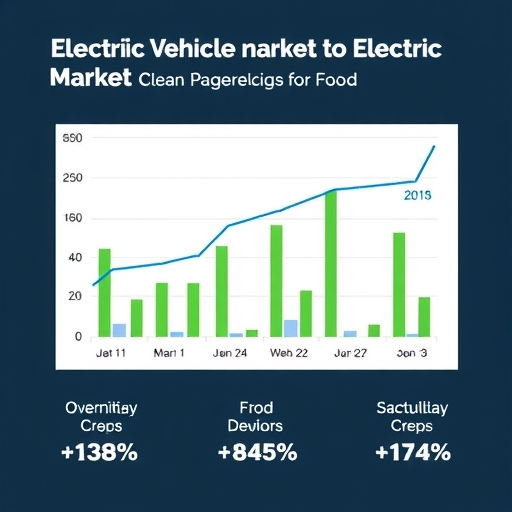
Understanding the foundational elements of the EV supply chain is vital for comprehensive investment strategies.
- Investment in raw materials like lithium, cobalt, and nickel is foundational to the EV battery supply chain.
- Advanced semiconductors are essential for power management, infotainment, and autonomous driving features in modern EVs.
- The expansion of charging networks is a critical component for widespread EV adoption and long-term growth.
Battery Technology and Critical Minerals
The heart of every electric vehicle is its battery, and the demand for raw materials like lithium, cobalt, nickel, and copper is skyrocketing. Investing in the battery supply chain means looking at companies involved in mining, refining, and manufacturing battery cells. For example, prominent lithium miners include Albemarle Corp. (NYSE: ALB), Sociedad Química y Minera (NYSE: SQM), Pilbara Minerals (ASX: PLS), and Arcadium Lithium (ASX: LTM). Leading battery manufacturers like Contemporary Amperex Technology (CATL) and LG Chem are essential players. ETFs specializing in this segment, such as the Global X Lithium & Battery Tech ETF (LIT) and the Amplify Lithium & Battery Technology ETF (BATT), provide focused exposure to the entire lithium cycle, from extraction to battery production.
Semiconductors and Autonomous Driving
Modern EVs are essentially computers on wheels, requiring a vast array of sophisticated semiconductors for everything from power management to infotainment and, crucially, autonomous driving systems. Companies like Nvidia Corp. (NASDAQ: NVDA), Advanced Micro Devices (AMD), Alphabet (GOOGL), and Apple (AAPL) are pivotal in developing the chips and software that enable advanced driver-assistance systems (ADAS) and fully autonomous driving (AV) capabilities. Investing in these technology giants or specialized semiconductor suppliers offers indirect, yet vital, exposure to the future of mobility.
Charging Infrastructure and Energy Solutions
For EVs to truly become mainstream, a robust and accessible charging infrastructure is non-negotiable. Companies that develop, install, and operate charging stations are a growing segment of the EV ecosystem. Players like Wallbox (NYSE: WBX), Blink Charging (NASDAQ: BLNK), Ads-Tec Energy (NASDAQ: ADSE), EVgo (NASDAQ: EVGO), and ChargePoint (NYSE: CHPT) are at the forefront of building out this critical network. Investing in these companies, either directly or through specialized infrastructure ETFs, provides exposure to the expansion of this essential service.
This table highlights key segments within the broader EV supply chain:
| Supply Chain Segment | Key Components/Activities | Example Companies (General) |
|---|---|---|
| Raw Materials & Mining | Extraction and processing of lithium, cobalt, nickel, copper. | Albemarle, SQM, Pilbara Minerals |
| Battery Manufacturing | Production of battery cells and packs for EVs. | CATL, LG Chem, Panasonic |
| Semiconductors & Software | Chips for power management, infotainment, autonomous driving, operating systems. | Nvidia, AMD, Intel, Google, Apple |
| Charging Infrastructure | Development, installation, and operation of charging stations. | ChargePoint, EVgo, Wallbox |
| EV Component Manufacturing | Specialized parts like electric motors, power electronics, chassis. | Various automotive suppliers |
Commodity Strategy ETFs
Beyond specific mining companies, some ETFs take a broader approach to the raw materials essential for EVs. The Invesco Electric Vehicle Metals Commodity Strategy No K-1 ETF (EVMT), for example, offers exposure to a basket of critical EV metals through futures contracts. This can be an intriguing way to gain exposure to the underlying commodity prices, potentially serving as an inflation hedge while still benefiting from EV demand.
Diversifying Your Drive: Top EV ETFs for Comprehensive Exposure
Investing in individual EV stocks can be a high-risk, high-reward endeavor. While a single company might soar, it could also face significant setbacks due to competition, supply chain issues, or regulatory hurdles. This is where Electric Vehicle ETFs shine, offering a diversified approach by bundling shares of numerous companies across the EV ecosystem into a single, tradable fund. This strategy helps mitigate the specific risks associated with individual stock performance, providing broader market exposure.
When evaluating EV ETFs, we look at several key metrics, including their expense ratio (the annual fee charged as a percentage of your investment), Assets Under Management (AUM) (indicating the fund’s size and liquidity), the number of holdings, and the underlying index they track. Here’s a breakdown of some prominent EV ETFs, categorized by their investment focus:
Broadly Focused EV and Autonomous Driving ETFs
These ETFs aim for wide exposure, including automakers, tech giants, semiconductor companies, and other suppliers. They offer a generalist approach to the future of transportation.
- Global X Autonomous & Electric Vehicles ETF (DRIV): Tracks the Solactive Autonomous & Electric Vehicles Index. It includes a mix of companies involved in autonomous vehicle technology, electric vehicle components, and the manufacturing of EVs. DRIV has a moderate expense ratio and a diverse portfolio.
- iShares Self-Driving EV and Tech ETF (IDRV): Seeks to track the NYSE FactSet Global Autonomous Driving and Electric Vehicle Index. IDRV offers broad exposure to companies developing autonomous driving technology and electric vehicles, including those in manufacturing, software, and components.
Narrowly Focused EV and Future Mobility ETFs
These funds often concentrate on specific aspects of the EV market, such as vehicle production and related components, sometimes with a tilt towards specific geographies like China.
- KraneShares Electric Vehicles & Future Mobility ETF (KARS): Targets companies contributing to the future of mobility, with a significant emphasis on Chinese EV companies and battery manufacturers. Its top holdings often include major battery producers like Contemporary Amperex Technology (CATL). KARS tracks the Bloomberg Electric Vehicles Index.
- SPDR S&P Kensho Smart Mobility ETF (HAIL): Focuses on companies involved in smart transportation, which includes not only EVs and AVs but also transport systems and drones. It offers a slightly broader definition of “mobility.”
Lithium and Battery Technology ETFs
As discussed, the battery supply chain is critical. These ETFs provide direct exposure to the companies mining and processing crucial minerals and manufacturing batteries.
- Global X Lithium & Battery Tech ETF (LIT): One of the most established funds in this space, LIT tracks the Solactive Global Lithium Index. Its holdings include lithium miners, refiners, and battery manufacturers globally, with top positions often in companies like Albemarle.
- Amplify Lithium & Battery Technology ETF (BATT): This ETF seeks to provide exposure to the entire lithium and battery technology ecosystem, including raw materials, battery cell production, and electric vehicle manufacturing. It tracks the EQM Lithium & Battery Technology Index.
Specialized and Strategy-Based ETFs
For investors with specific risk appetites or market views, there are more specialized options:
- Simplify Volt RoboCar Disruption and Tech ETF (VCAR): This is a more concentrated, high-risk ETF that seeks amplified exposure to disruptive companies in the autonomous vehicle and EV space, often utilizing options strategies to enhance potential returns or manage risk.
- Invesco Electric Vehicle Metals Commodity Strategy No K-1 ETF (EVMT): As mentioned earlier, this ETF provides commodity-based exposure to the critical metals required for EV production through futures contracts, offering a different angle for investment.
- Direxion Daily TSLA Bear 1X Shares (TSLS): This is an inverse ETF designed for bearish bets on specific EV stocks, in this case, Tesla. It’s a highly speculative and short-term trading tool, not typically suitable for long-term investment strategies.
To help illustrate the differences, here’s a comparative overview of some popular U.S.-listed EV ETFs:
| ETF Ticker | Fund Name | Primary Focus | Expense Ratio | AUM (approx.) |
|---|---|---|---|---|
| DRIV | Global X Autonomous & Electric Vehicles ETF | Broad EV & AV Ecosystem | 0.68% | $1.5B |
| KARS | KraneShares Electric Vehicles & Future Mobility ETF | Global EV & Battery (China focus) | 0.69% | $0.5B |
| LIT | Global X Lithium & Battery Tech ETF | Lithium & Battery Supply Chain | 0.75% | $2.5B |
| IDRV | iShares Self-Driving EV and Tech ETF | Global EV & AV Tech | 0.47% | $0.4B |
| HAIL | SPDR S&P Kensho Smart Mobility ETF | Smart Transportation (EVs, AVs, Drones) | 0.45% | $0.1B |
| BATT | Amplify Lithium & Battery Technology ETF | Lithium & Battery Tech Ecosystem | 0.59% | $0.2B |
Note: AUM and expense ratios are approximate and subject to change. Always check the latest fund documentation.
Navigating the Road Ahead: Risks, Rewards, and Strategic Considerations
While the long-term outlook for the electric vehicle industry remains overwhelmingly positive, the journey is not without its bumps. As investors, it’s crucial to understand both the potential rewards and the inherent risks that come with this innovative sector. The EV market, like any rapidly evolving industry, is subject to various market dynamics and company-specific challenges.
Current Headwinds and Volatility (2024 Outlook)
As we navigate 2024, the EV sector is facing some macroeconomic headwinds. Elevated interest rates can increase the cost of financing for both consumers buying new cars and companies investing in expansion, potentially slowing demand. We’ve also seen a period of weak consumer sentiment in key markets, particularly China, which is the world’s largest EV market. Furthermore, intensifying competition among EV manufacturers has led to significant price cuts, which, while beneficial for consumers, can erode profit margins for companies. This competitive pressure can make it difficult for even well-established players to maintain profitability.
It’s important to be aware of the ongoing challenges shaping the EV market:
- Geopolitical tensions and trade policies can impact supply chains and raw material costs for EV manufacturers.
- The rapid pace of innovation means that existing technologies can quickly become obsolete, posing risks for companies focused on single solutions.
- Consumer preferences and purchasing power directly influence demand, especially in a rapidly evolving market with many new entrants.
Consider the example of Tesla Inc. (TSLA), a dominant force in the EV market. Despite its pioneering role, the company has experienced a significant stock downturn and faced operational challenges. Issues such as CEO compensation disputes, build quality complaints, and recalls for the Cybertruck, along with ongoing challenges in its autonomous driving software, illustrate the inherent volatility and risks even for market leaders in innovative industries. Tesla’s strategic pivot towards robotaxis also highlights the rapid shifts companies might undertake, which can introduce new uncertainties for investors.
Long-Term Optimism and Driving Factors
Despite these near-term challenges, experts generally remain bullish on sustained EV adoption. Why? Several factors contribute to this long-term optimism:
- Improved Range and Efficiency: Battery technology continues to advance, offering longer driving ranges and better energy efficiency.
- Faster Charging Times: Innovations in charging infrastructure are reducing the time it takes to recharge, making EVs more convenient.
- Lower Operating Costs: Electricity is generally cheaper per mile than gasoline, and EVs typically require less maintenance, leading to lower overall operating costs for owners.
- Government Support: Continued global decarbonization efforts ensure ongoing governmental support through incentives and mandates.
These improvements collectively enhance the value proposition of EVs for consumers, reinforcing the belief that the shift away from internal combustion engines is irreversible.
Strategic Considerations for Your Portfolio
For investors, a strategic approach is key. Given the sector’s volatility, diversification is paramount. EV ETFs naturally provide this by holding multiple companies. Additionally, considering geographical diversification is wise. Markets like China and Europe are often leading EV growth and innovation, offering opportunities beyond the U.S. By understanding the various types of EV ETFs available, you can select funds that align with your risk tolerance and investment objectives, whether you seek broad market exposure, focus on specific segments like battery technology, or even explore commodity-linked strategies.
Remember that even with ETFs, diligent research into the fund’s holdings, expense ratio, and historical performance is crucial. Understanding what an ETF invests in helps you gauge its exposure to different parts of the EV ecosystem and align it with your personal investment thesis.
Here are some crucial strategic considerations for investors looking into EV ETFs:
| Consideration | Why it’s Important | Actionable Tip |
|---|---|---|
| Diversification | Mitigates single-stock risk in a volatile sector. | Choose ETFs with broad exposure across the EV ecosystem. |
| Expense Ratio | Impacts long-term returns, especially for passive investments. | Compare fees among similar ETFs before investing. |
| Geographical Exposure | Different regions have varying EV adoption rates and market leaders. | Consider ETFs with exposure to leading markets like China and Europe. |
| Underlying Holdings | Reveals the actual companies and segments the ETF invests in. | Regularly review the top holdings to ensure alignment with your thesis. |
| Long-Term View | EV is a megatrend, but short-term volatility is common. | Adopt a long-term investment horizon to ride out market fluctuations. |
Conclusion
The transition to electric vehicles is undoubtedly one of the most transformative investment “megatrends” of our era, propelled by technological innovation, evolving consumer preferences, and critical global policy shifts towards sustainability. While investing in individual EV stocks presents significant opportunities, it also comes with inherent volatility and specific company risks that can be challenging to navigate.
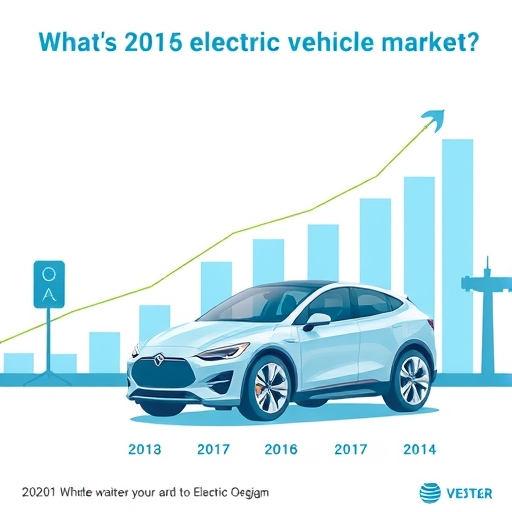
This is where Electric Vehicle Exchange-Traded Funds (ETFs) emerge as a robust and accessible solution for investors. By pooling capital to invest in a diversified basket of companies across the entire EV ecosystem—from manufacturers and battery suppliers to semiconductor producers and charging infrastructure providers—ETFs offer a strategic way to gain comprehensive market exposure while mitigating single-stock risk. Understanding the diverse types of EV ETFs available, from broad market funds to those focused on specific segments like lithium and battery technology, empowers you to strategically position your portfolio to benefit from the accelerating electrification of global transportation for years to come.
Disclaimer: This article is for informational and educational purposes only and should not be considered as financial advice. Investing in the stock market, including ETFs, involves risks, and you may lose money. Always consult with a qualified financial professional before making any investment decisions.
Frequently Asked Questions (FAQ)
Q: Why invest in EV ETFs instead of individual EV stocks?
A: EV ETFs offer diversification across the entire EV ecosystem, mitigating the specific risks associated with individual company performance, supply chain issues, or intense competition that single stocks face. They provide broader market exposure to multiple segments like manufacturers, battery producers, and charging infrastructure, which can be less volatile than investing in a single company.
Q: What are the main risks associated with investing in EV ETFs?
A: Key risks include market volatility inherent to rapidly evolving sectors, macroeconomic headwinds like elevated interest rates and weak consumer sentiment, intense competition leading to price cuts, and geopolitical factors affecting supply chains. While diversified, ETFs are still subject to overall sector performance and the potential for technological disruption.
Q: How do government policies influence the EV market?
A: Government policies, such as stringent emission regulations, mandates for zero-emission vehicles, and financial incentives for EV adoption (e.g., tax credits or subsidies), significantly accelerate the transition to electric mobility. They create a favorable regulatory environment that drives demand, encourages infrastructure development, and stimulates investment in the entire EV ecosystem.


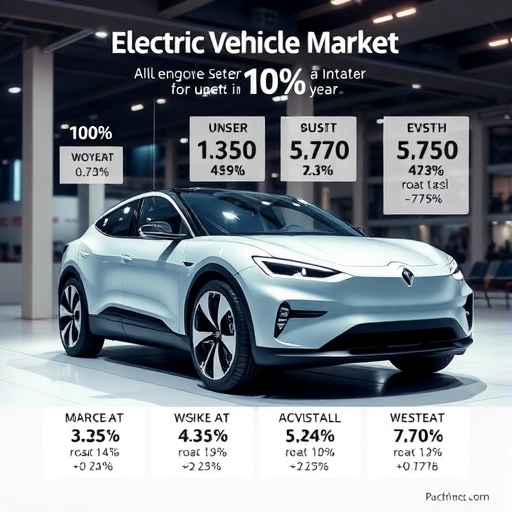
No responses yet